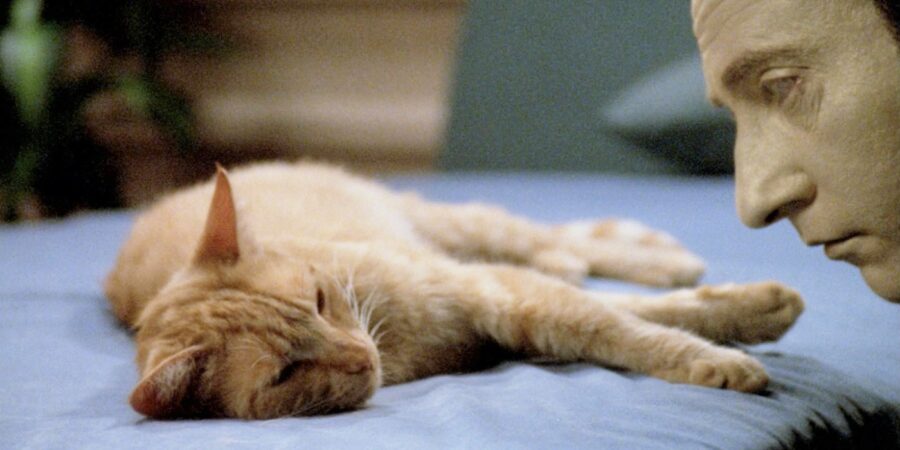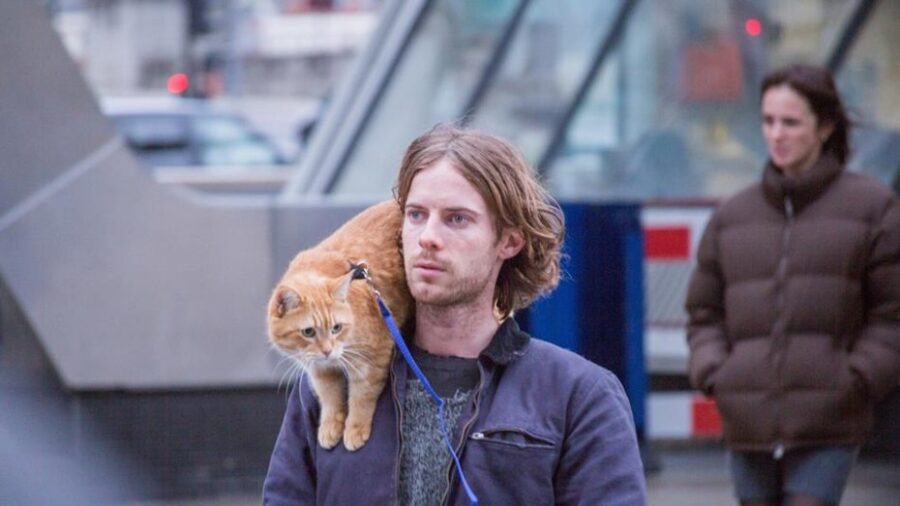Science Confirms The Perfect Way To Communicate With Your Cat
Research proves slow blinking at your cat is the equivalent of smiling.

Unlike dogs, cats have a bit of a salty reputation for being cold and uncaring when it comes to connecting with their human companions. While for centuries, we’ve decided that canines are just friendlier than felines, that may not actually be the case. According to Science Alert, it’s possible that we’ve been communicating with felines the wrong way this entire time, and the simple act of slow blinking at your cat might be enough to create a stronger bond with your animal companion.
According to a captivating study from 2020, building a stronger connection with your feline friend might be as simple as offering them a heartfelt smile. But before you go flashing your pearly whites at your kitty like the Chesire Cat from Alice In Wonderland, you have to learn to smile at your cat in a feline way, not the human way. It turns out felines have a secret language that, even after centuries of being friends with these furry creatures, we’ve only just figured out.
Animal observers recently realized that cats smile by narrowing their eyes and blinking slowly, which brought up the question, if humans replicate this expression back at their kitties, will the pets accept this as a friendly smile and develop a stronger bond with their human?
So, animal behaviorists put the question to the test and conducted a study to see if we can communicate with our cats in such a simple way. The study, conducted by a team of brilliant psychologists, sought to explore the effects of slow-blinking on cat-human communication.
In the first experiment, dedicated cat parents were instructed to slow-blink at their beloved felines when they were in a relaxed and comfortable state. Cameras were set up to capture this groundbreaking inter-species interaction, comparing the results to the cats’ blink behavior in the absence of human involvement.

As it turns out, cats were more inclined to return the slow-blink gesture when their humans initiated it, proving that our feline friends are not as aloof as their reputation suggests. They responded to our efforts to connect, rewarding us with a reciprocal slow-blink, a feline smile in its purest form.
In the second round of experimentation, the researchers took matters into their own hands, quite literally. Instead of using the pet parents, the researchers themselves approached cats whom they’d never met before, extending a hand while indulging in the art of the slow blink. Not only did the cats blink back, but they also curiously approached the human’s hand, ready to engage in this newfound conversation.
This study is the first of its kind to delve into the depths of slow-blinking and its profound impact on cat-human communication. As Karen McComb, a psychologist from the University of Sussex, joyfully proclaimed, “It’s something that many cat owners had already suspected, so it’s exciting to have found evidence for it.”
Recent research has shattered the notion that cats are distant and indifferent creatures. In fact, they are incredibly in tune with their human housemates, as studies have shown that they reflect the personalities of the humans they live with. Additionally, cats possess a remarkable ability to recognize their names (even if they choose to ignore them most of the time).
Learning more about cats and their communication strategies helps pet parents communicate more effectively with their animals and can also improve the welfare of felines, especially in veterinary offices and shelters.












